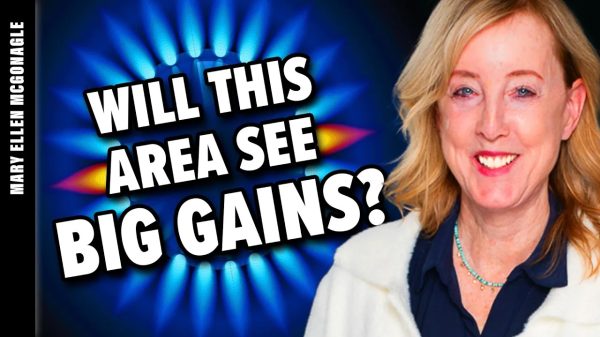Alan Reynolds
Larry Summers, former Director of the National Economic Council for President Obama, recently wrote a Washington Post article advising “What Jerome Powell should say on inflation.”
To support his latest excuses for the Fed to “hit the brakes some more,” he added a strange graph claiming, “The last decade of U.S. inflation mirrors 1966 to 1976.” “It is sobering to recall,” he wrote, “that the shape of the past decade’s inflation curve almost perfectly shadows its path from 1966 to 1976 before it accelerated in the last 1970s.”
It is doubtful that Summers’ graph was meant to imply that inflation follows a predictable 50‐year cycle. It is more likely that he expected us to see it as proof that inflation is a mysterious wild beast that can arise from the deep and attack us at any moment unless the Fed keeps beating it on the head with “considerably higher” short‐term interest rates.
To make any sense of the two‐in‐one Summers graph, we must separate the two periods and add two key variables—oil prices and Fed interest rates. What both periods had in common were huge surges in oil prices in 1974, 1980, and 2021–22, which greatly affected inflation and Fed interest rates.
The lowest year‐on‐year monthly inflation in the 1966–76 period was an artificial decline from 4.4 percent in August 1971 to August 1972, before Nixon’s price controls blew up. That 1972 low Consumer Price Index (CPI) for 1966–76 matches up with the 0.3 percent low in April 2020 when the pandemic hit the United States and oil prices fell 74 percent from a year earlier.
Similarly, the peak inflation numbers in the 1966–76 period were in 1974 when Arab oil production cut pushed monthly oil prices up 135–184 percent. That 1974 peak lines up with highest recent inflation of 8.9 percent in June 2022 with global oil prices up 61 percent from the Russia‐Ukraine oil crisis—on top of other large oil price hikes during the March to May 2021 reopening and stimulus. For 1966–76, CPI increases averaged 5.5 percent and the federal funds rate averaged 6.3 percent. For 2013–23, average CPI increases were 2.6 percent and the federal funds rate averaged 1 percent.
Figure 1, for 1966 to 1983, copies Summers year‐over‐year (YoY) changes in the Consumer Price Index but adds the year‐over‐year change in the price of a barrel of West Texas Intermediate (WTI) Crude Oil on the right axis, shown as grey bars. It also adds the federal funds rate as a red line on the left axis together with the YoY change in the CPI in green.
Figure 2 repeats the same data for 2013 to July 2023, with inflation and interest rates on the left axis and WTI oil prices on the right.
Figure 1
The mistaken lesson Fed hawks like Summers try to draw from Figure 1 is that the Fed cut rates too fast too long after the middle of the 1975 recession. But the Fed has always slashed rates in recessions ever since keeping the 5–6 percent discount rate higher‐for‐longer” in the deflations of 1921 and 1929. If anyone does not want the Fed to push rates too low (such as June 2008 to June 2022), then don’t let the Federal Open Market Committee (FOMC) keep launching recessions by inverting the yield curve too long.
As it happened, oil prices began rising again in February 1976, up by 25 percent YoY that September, and inflation did too. Oil exploded with the Iranian Revolution—up 149 percent in April 1980, when CPI inflation peaked at 14.6 percent. It is a convenient institutionalized Fed myth that Chairman Burns or Miller cut interest rates “prematurely” before Volcker arrived in August 1979. The federal funds rate had risen in synch with consumer prices after 1975, exceeding the inflation rate by early 1978.
It was the Volcker Fed that cut the fed funds rate prematurely. CPI inflation peaked at 14.6 percent in March 1980 and the federal funds rate was raised to 19.4 percent in the week ending April 2, 1980. But the recession was not as mild as promised, so the federal funds rate was quickly halved to 8.7 percent by July 23. It was back above 19 percent by year end, of course, in time for President Reagan’s inaugural.
Oil price shocks are temporary, and crude oil prices fell after March 1981 and inflation slowed to 8.9 percent by year end. From 1983 to 1986, after the Iran‐Iraq war subsided, oil prices fell dramatically and so did inflation, which is why Summers ends his graph with 1983. As Figure 1 shows, the Fed was shockingly slow to bring interest rates down as inflation fell which made real interest rates punishingly high. Fortunately, the foolishly delayed Reagan‐Kemp tax rate reductions were finally implemented with a 10 percent cut in 1983 and another 10 percent in 1984. Much to the dismay of the Fed, real GDP grew by 4.4 percent a year for seven years, with a brief interruption from a brief oil crisis when Iraq invaded Kuwait.
FIGURE 2
In June 2022, Larry Summers lectured that “we need five years of unemployment above 5 percent to contain inflation—in other words, we need two years of 7.5 percent unemployment or five years of 6 percent unemployment or one year of 10 percent unemployment” just to contain inflation, not reduce it.
Figure 2 shows how incredibly wrong that was. The annual rate of CPI inflation was 9.7 percent in the second quarter of 2022 and 2.7 percent in the second quarter of 2023. The annual rate of inflation was 1.5 percent in May, 2.2 percent in June, and 2 percent in July. The habit of measuring inflation over 12‐month spans understates the pace of change because an average of the last 12 months is still lugging around old baggage leftover from last fall and winter.
The smart takeaway from Larry Summers’ misleading comparison of recent events with the oil crises of 1973–1982, and from his June 2022 cheerleading for a 5–10 percent unemployment rate, is that Fed Chairman Powell should look elsewhere for advice.
























